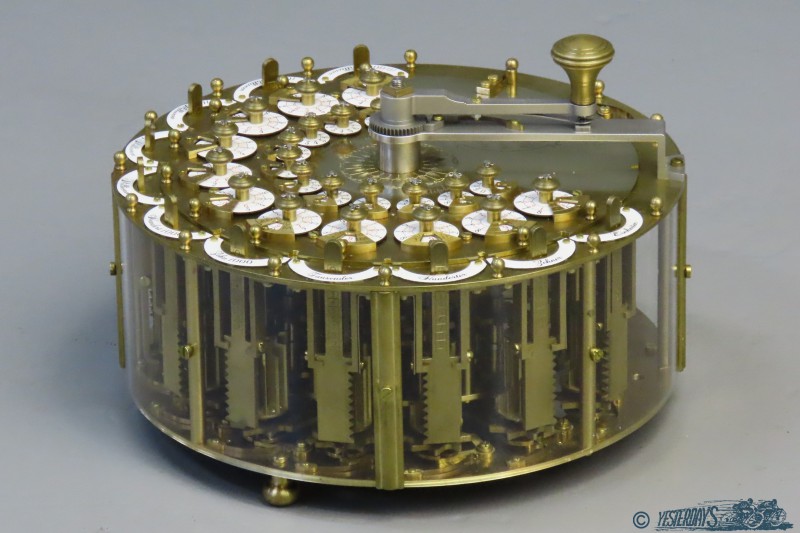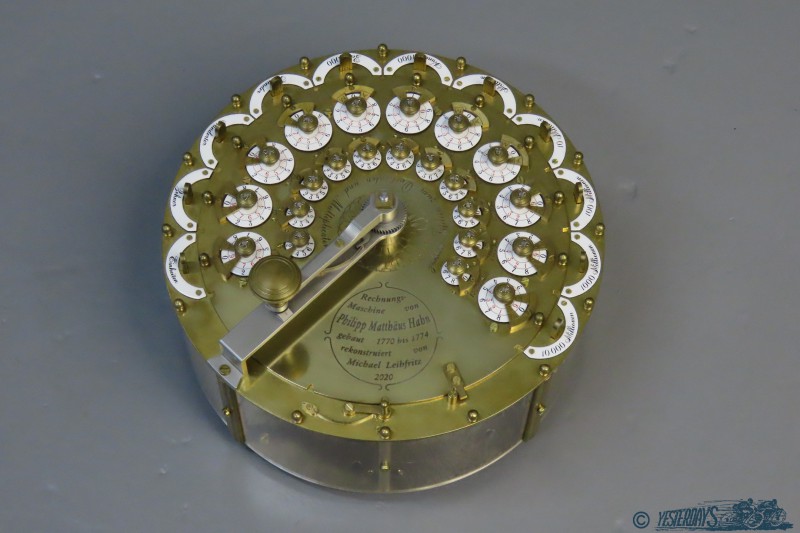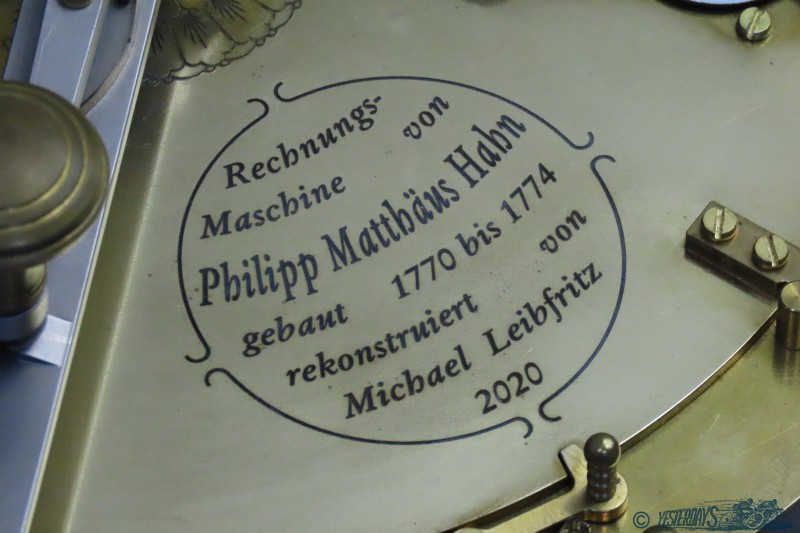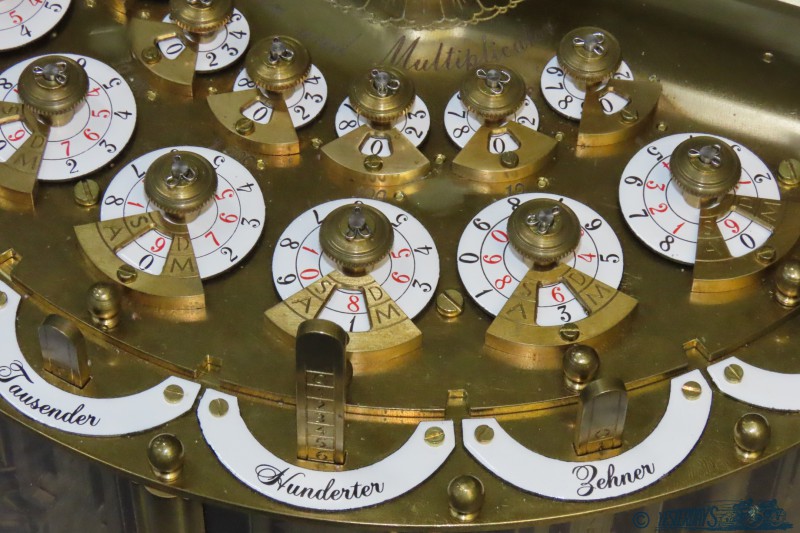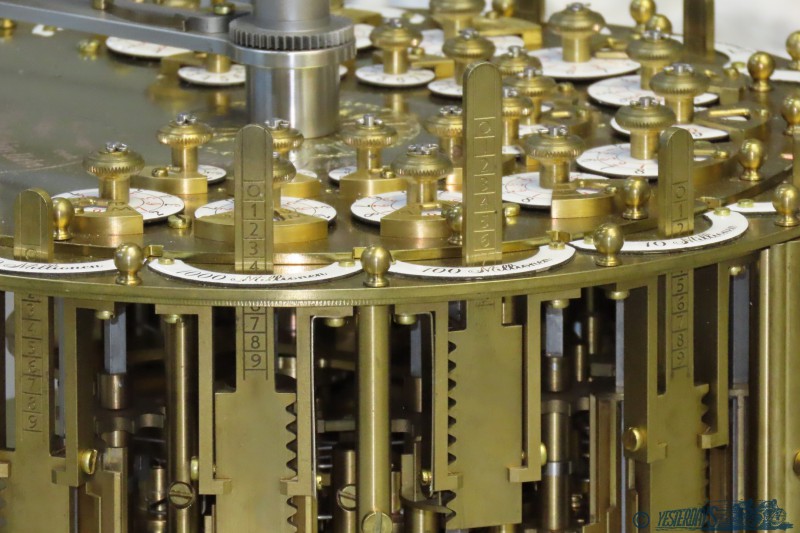Description
Philipp Mathäus Hahn calculating machine 1770-1776 recreation
It is well known that the calculating machine for the four basic arithmetic operations was invented by the universal genius Gottfried Wilhelm Leibniz in the 1670s. During his lifetime he made several copies or had them built by skilled craftsmen, but none of them worked properly. However, the stepped roller used by Leibniz, an elongated gear wheel with teeth of different widths, later made practicable devices possible. The first working calculator of this type came from the Swabian pastor Philipp Matthäus Hahn. He was born in Scharnhausen, South-East of Stuttgart in Germany in 1739 and died in Echterdingen in 1790.
In addition to his main job as a pastor, Philipp Mathäus Hahn (1739-1790) ran a workshop in which he constructed clocks and world machines for which complex arithmetic operations had to be solved correctly. One day he wrote: “Today, 10 p.m., I’ve miscalculated again: Now I’m building a calculating machine!” So he invented a fully functioning calculating machine that was operated by a few turns of a crank. The original machine has survived and is now on display in the Württembergischen Landesmuseum in Stuttgart. A copy, made in 1992, can be seen in the Arithmeum Museum in Bonn. The specimen we offer here has been constructed some years ago by a very skilled German engineer, Michael Leibfritz. From photographs he worked out three dimensional computer drawings of all the parts and then took on the giant task of producing and assembling more than a thousand parts to construct the machine.
The following links refer to You Tube items which give an idea of the working of this ingenious device: https://youtu.be/WjrNb5fpiDA

